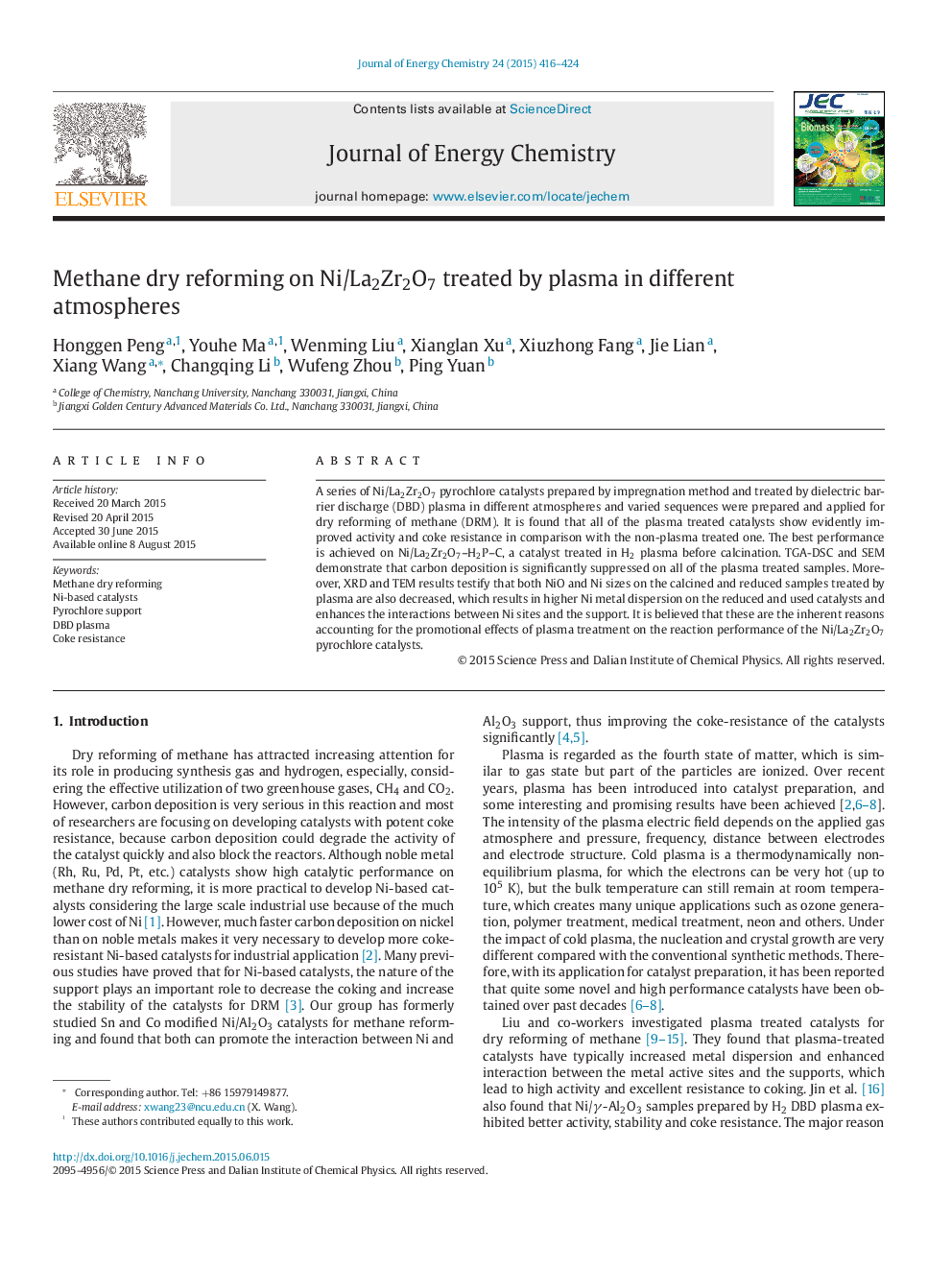| Article ID | Journal | Published Year | Pages | File Type |
|---|---|---|---|---|
| 63845 | Journal of Energy Chemistry | 2015 | 9 Pages |
A series of Ni/La2Zr2O7 pyrochlore catalysts prepared by impregnation method and treated by dielectric barrier discharge (DBD) plasma in different atmospheres and varied sequences were prepared and applied for dry reforming of methane (DRM). It is found that all of the plasma treated catalysts show evidently improved activity and coke resistance in comparison with the non-plasma treated one. The best performance is achieved on Ni/La2Zr2O7–H2P–C, a catalyst treated in H2 plasma before calcination. TGA-DSC and SEM demonstrate that carbon deposition is significantly suppressed on all of the plasma treated samples. Moreover, XRD and TEM results testify that both NiO and Ni sizes on the calcined and reduced samples treated by plasma are also decreased, which results in higher Ni metal dispersion on the reduced and used catalysts and enhances the interactions between Ni sites and the support. It is believed that these are the inherent reasons accounting for the promotional effects of plasma treatment on the reaction performance of the Ni/La2Zr2O7 pyrochlore catalysts.
Graphical abstractPlasma treatment has decreased the Ni crystallite size, increased the Ni dispersion and the interaction between Ni and La2Zr2O7 support evidently, thus improving the coke resistance and activity of Ni/La2Zr2O7 for methane dry reforming.Figure optionsDownload full-size imageDownload as PowerPoint slide
